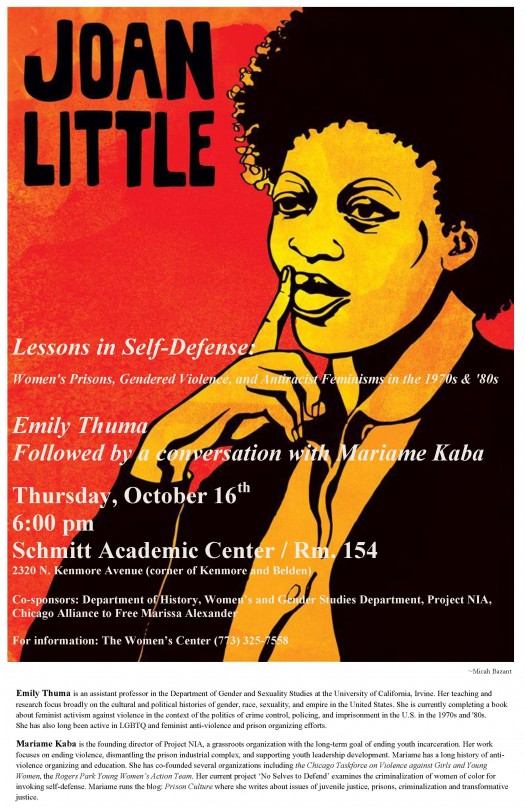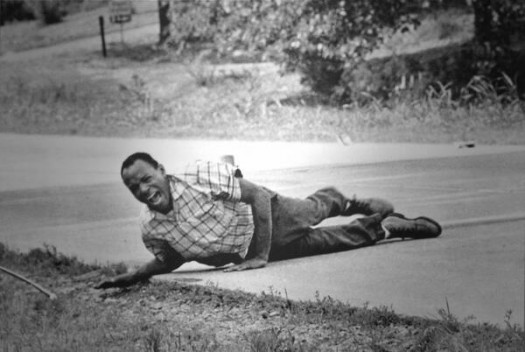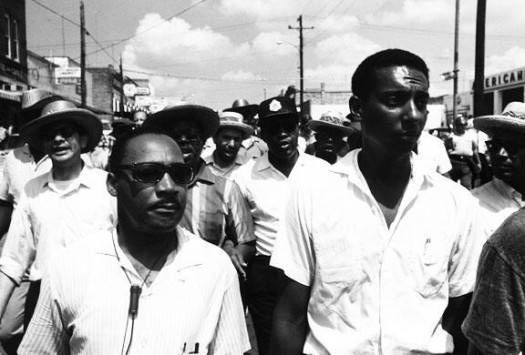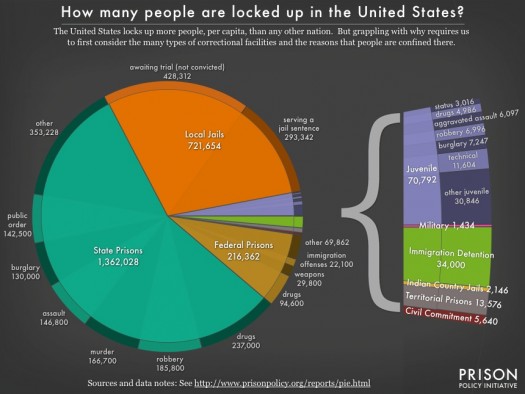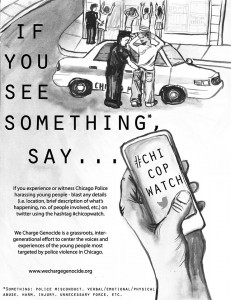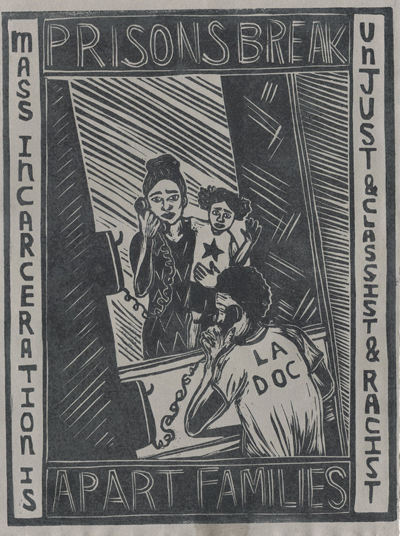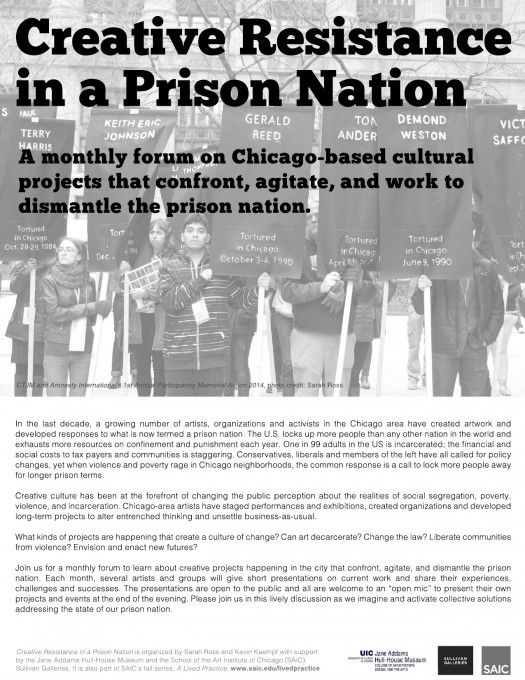I’ve been going non-stop since last week and I still have to work this weekend. As such, I am afraid that I haven’t had any time to blog. Next week continues to be slammed so I anticipate sporadic posting for the next couple of weeks.
A few PIC stories caught my attention this week. First, the Bureau of Justice released a report (PDF) on the number of prisoners in the U.S. in 2013 (excluding people in jail). The Prison Policy Initiative offered a good summary of the report. They key takeaway is that:
“Overall, the state and federal prison population increased slightly between 2012 and 2013. Although this is the first overall increase since 2009, the overall prison population has held fairly steady compared to the rapid rise of earlier decades.”
I’d like to write more about this in the near future. I have been consistently saying that we need to be cautious and not get caught up in the smoke and mirrors of current prison “reform” talk. I hope that the fact the state prison population is rising again will temper some of the irrational exuberance in some quarters about decarceration. There is so much to do to make decarceration real and to sustain it. We need a real movement to coalesce to significantly decrease the numbers of people incarcerated in this country. We are far from that point right now.
Amidst all of the noise and consternation about Ray Rice’s abuse of his now wife Janay, I appreciated reading this article by Vikki Law titled “How Many Women are in Prison for Defending Themselves Against Domestic Violence?.” The article reminds us of the danger posed to victims of domestic violence by their abusers and too often by the state itself. Vikki writes:
“But in all this discussion about the realities of domestic violence, one perspective was clearly left out: the people who are imprisoned for defending themselves against abusers. Where are the stories about how the legal system often punishes abuse survivors for defending themselves, usually after the legal system itself failed to ensure their safety?”
She features Marissa Alexander’s case and also discusses her interviews with other women who have been criminalized for defending themselves against abuse. It’s an article worth reading. Marissa turned 34 years old last Sunday and I organized a birthday celebration for her which included a panel discussion about blackness. violence and self defense.
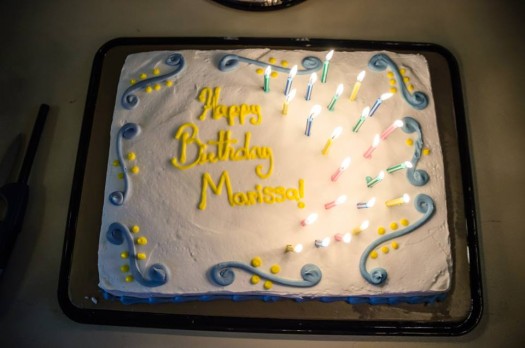
cake for Marissa’s birthday (9/14/14)
This Friday is the closing reception of the No Selves to Defend exhibition at Art in these Times in which Marissa’s case is prominently featured. I hope that you will join us.
My friend Yasmin Nair wrote a very good post about Daniele Watts that I invite everyone to read. She writes:”The problem with the Watts story is that it was, from the start, bound up in notions of sexual respectability and did little to actually further a conversation about the real issues at stake.” I could not agree more. It’s why I didn’t write anything about the incident and mostly refrained from any comment on social media. Yasmin ends her post with this sound advice:
“Neither Watts nor Lucas come off well. Rather than focus on their innocence and express horror at their respectability being denied to them, we might critique our own investment in and insistence upon such. Let’s not turn them into either heroes against the state or craven capitulators to the same and, instead, use such instances to have more complicated conversations about the role of the state and capitalism in regulating sexuality and our bodies.”
I’d like more people to know about Eisha Love‘s plight and to support her as she fights for her freedom:
“On the morning of March 28, 2012, while stopping at a gas station, Eisha Love and a friend were accosted at a gas station with a barrage of anti-trans epithets which led to an altercation. The men called for reinforcements while the two women fled in a car. They were being chased by men on foot and in a vehicle when Eisha lost control of the car and struck one of the men leading to a severe leg injury.
Eisha went to the police station to report the attack, but instead of investigating, the police booked her on aggravated assault. The charges against her have since been upgraded to attempted murder.”
You can sign a petition calling for her to be freed. You can also share her story with others.
This week, I enjoyed an essay by Jonah Birch and Paul Heideman titled “The Poverty of Culture.” I highly recommend reading it. They write:
“Take, for example, the claim that black youth inhabit a culture that venerates criminality, in which having been incarcerated is a matter of pride. This particular trope has seen heavy circulation in the last few years, trotted out to rationalize every death of a young black man at the hands of the police or vigilantes. Constructed out of a conglomeration of supposedly “thuggish” photos, snatches of rap lyrics, or social media ephemera, it works to make respectable the narrative that, in every case, it was the black teenager who threw himself in a fury at the men with guns. Confronted with such deep-seated criminality, the pundits innocently ask, what else were the police supposed to do?
Ethnographies of returned prisoners and their families reveal a very different world, one that coincides more with the commonsense notion that people who already face discrimination in the labor market would hardly celebrate events, like incarceration, that will make their lives even harder. Donald Braman spent four years conducting interviews with prisoners, ex-prisoners, and their families in the Washington DC area, and found that black families regarded incarceration with anything but pride.”
Last Saturday, my organization co-sponsored a talk in Evanston by Nell Bernstein about her new book “Burning Down the House: The End of Juvenile Prisons.” I then impromptu moderated a panel of youth in conflict with the law after her lecture. This week, Sara Mayeux published a good interview with Bernstein who reiterates the case that she made on Saturday for abolishing juvenile prisons.
I don’t know what to say or to write about the atrocious story of Oklahoma City Police officer Daniel Holtzclaw. I recommend reading this harrowing article by Jessica Testa in Buzzfeed. Let me warn you that it is a really horrible story. I don’t have the bandwith to do any organizing around this story but @FeministaJones has been doing a lot to keep the story in people’s minds on Twitter.
I spent many hours this week working on a campaign to send six young organizers to Geneva to present a report about Chicago Police Department abuse against young people of color to the UN. This is part of a project called We Charge Genocide that I wrote about on Monday. After five days, the campaign has raised $9,000 out of a goal of $15,000. The outpouring has been moving and overwhelming. We still need to raise more money. You can contribute here and also spread the word to others too.
On a more uplifting note, the trauma center coalition hosted a “Sing for a Trauma Center” event on Thursday. Take a couple of minutes to watch the video below:
I have another weekend of work ahead and a long week to follow that. I hope to be back to more regular blogging in a couple of weeks.
